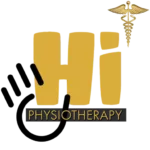- Needle insertion: The practitioner inserts thin, sterile needles directly into the trigger points or tight bands of muscle. The needles used in dry needling are typically similar to those used in acupuncture but may vary in length and thickness depending on the specific technique and the area being treated.
Local twitch response: When the needle is inserted into the trigger point, it can elicit a localized twitch response, which is an involuntary muscle contraction. This twitch response is often considered an essential aspect of the treatment and is believed to help release the tension and improve the function of the muscle.
Mechanisms of action: The precise mechanisms through which dry needling works are not fully understood. It is thought to have several effects, including releasing muscle tension, promoting blood flow, reducing pain and inflammation, and stimulating the body’s natural healing response.
Conditions treated: Dry needling is commonly used to manage various musculoskeletal conditions, such as muscle pain, myofascial pain syndrome, tension headaches, neck and back pain, joint pain, and sports-related injuries. It is often used as part of a broader treatment plan that may include other interventions like manual therapy, exercise, and patient education.
It’s important to note that dry needling should be performed by trained healthcare professionals who have received appropriate education and certification in the technique. The safety and efficacy of dry needling depend on the skill and expertise of the practitioner, as well as a thorough assessment of the individual’s condition.
If you are considering dry needling as a treatment option, I recommend consulting with a qualified healthcare professional who can evaluate your specific needs, explain the potential benefits and risks, and determine if dry needling is appropriate for you.


